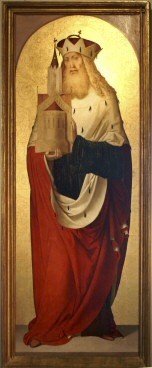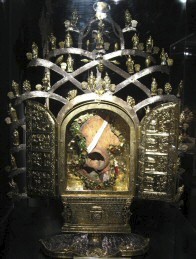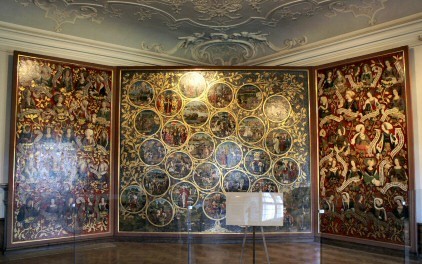The Canonization of Margrave Leopold III.

Leopold III was already called the "mild margrave" during his lifetime, and soon after his death on 15 November 1136, the veneration of his burial place in Klosterneuburg Abbey began. Only from the beginning of the 14th century did the ducal family also promote the cult of their predecessor. Rudolf IV. (1358-65) finally supported the canonisation of the Babenberger. This fitted in with his political concept, for he strove with all means to bring increased splendour to his country and his house. A holy sovereign prince seemed particularly suitable for this. However, the early death of the duke put the canonization process to sleep.
Only Emperor Frederick III, who consciously took up the ideas of Rudolf the Founder, succeeded in resuming the process after exactly one hundred years. This was delayed by many difficulties, extended over the reign of three popes and was not concluded until 1485. On 6 January this year, Pope Innocent VIII admitted the Austrian Margrave among the saints of the Church.
The veneration of the new patron saint of the country became popular very quickly. Soon pilgrimages to Leopold's grave in Klosterneuburg began, altars and churches were consecrated in his honour.
Some important works are also connected with his canonization: the Babenberg story of Ladislaus Sunthaym, the Babenberg family tree and many depictions of the new saint. The solemn transfer of the relics did not take place until 1506, as Emperor Maximilian 1 wanted to attend it personally and this was not possible earlier. This ceremony in turn provided inspiration for several works of art. The famous cycle Rueland Frueaufs the Younger was probably created on this occasion, as was the tapestry by Dr. Fuchsmagen.
Maximilian I. clearly presented himself in public at the time as the successor of St. Leopold. Among the later Habsburgs, the cult of the patron saint of the country contributed greatly to the promotion of the Austrian state

Letzte Ruhestätte, Kapitelsaal Stift Klosterneuburg

Reliquie von Leopold III, Diözesanmuseum St. Stephan, Wien
Source: Catalogue of the Lower Austrian Provincial Exhibition 1976 "1000 Years Babenberger in Austria" , F. Röhrig
Photos: G. Eichinger

Babenberg family tree, Stiftmuseum Klosterneuburg